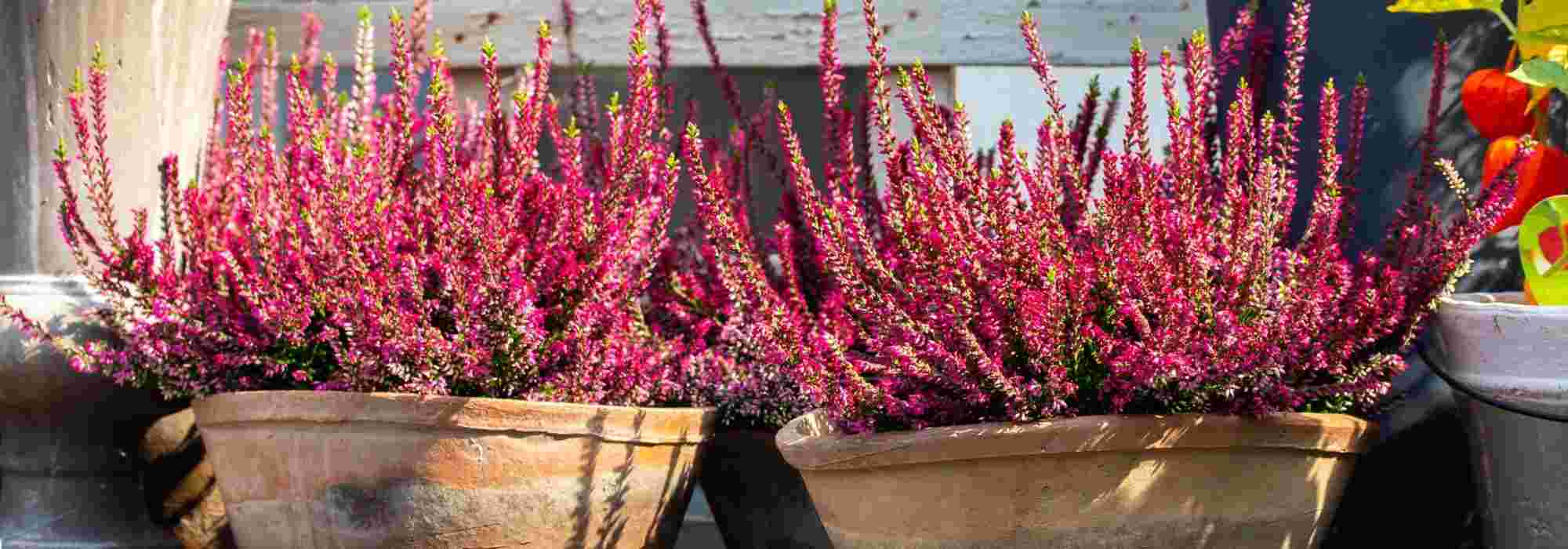
7 perennials to grow in pots on an east-facing balcony
Our selection and our advice
Contents
Facing East, a balcony is illuminated by the sun in the morning and is shaded in the afternoon until nightfall. Plants sensitive to scorching sun are therefore comfortable and protected from intense heat. However, in winter, this situation leads to drastic temperature changes. Indeed, the morning sun causes a rapid thaw of the soil. That’s why hardy plants should be prioritised. To enjoy your green space for even longer, opt for perennials with evergreen foliage that last for many years and remain decorative throughout the seasons.
Here is our selection of plants for window boxes, pots, containers, or bowls with spring, summer, autumn, and winter flowering.
Helleborus niger orientalis 'Madame Lemonnier'
Remarkable for its abundant and long-lasting winter flowering, Helleborus niger orientalis ‘Madame Lemonnier’ adds a splash of colour while waiting for spring to return. From November to April, this perennial captures our attention with its single flowers ranging from pink to purple depending on the temperature, standing tall above the glossy, dark green, palmate foliage. Decorative all year round thanks to its evergreen leaves, this very hardy Christmas Rose of French origin prefers to be sheltered from the wind. Shaded situations suit it well, as it cannot tolerate direct sunlight. An east-facing position is therefore perfectly appropriate. The Hellebore ‘Madame Lemonnier’ should be planted in rich, well-drained, somewhat calcareous substrate that remains cool in summer. However, ensure that water does not stagnate in the pot. Additionally, to prevent black spot disease, grey rot, or collar rot, remove old leaves when new flower buds appear.
Install the Helleborus niger orientalis ‘Madame Lemonnier’ in a large pot so that its roots have space to develop alongside Primroses and bulbs such as Cyclamen, Daffodil, Muscari, and Snowdrop.
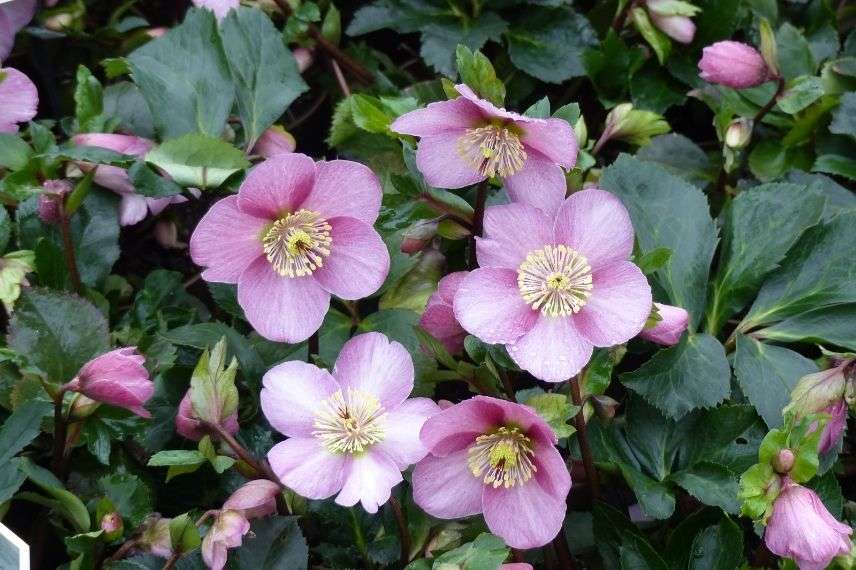
Helleborus niger orientalis ‘Madame Lemonnier’
Discover our range of Hellebores!
Learn all about planting, growing, and caring for Hellebores.
Ophiopogon planiscapus 'Nigrescens'
Perfect for beginner gardeners, Ophiopogon planiscapus ‘Nigrescens’ closely resembles a grass, but it is not one! The distinctive feature of this perennial known as Snake Beard is its almost black foliage! Measuring about twenty centimetres in all directions, it looks stunning in a pot. In July and August, it produces discreet white flowers accented with a hint of pale pink. Although it prefers shade or partial shade, this Ophiopogon can adapt to all exposures, provided the sun is not too scorching. Hardy down to -15°C, its foliage remains evergreen in regions with mild winters. When planting in a pot, ensure it has a humus-bearing, well-drained, and slightly acidic substrate.
The Snake Beard ‘Nigrescens’ adds an exotic touch to a large pot arrangement featuring Lysimachia nummularia ‘Aurea’, a Campanula, and Brunnera macrophylla ‘Jack Frost’.
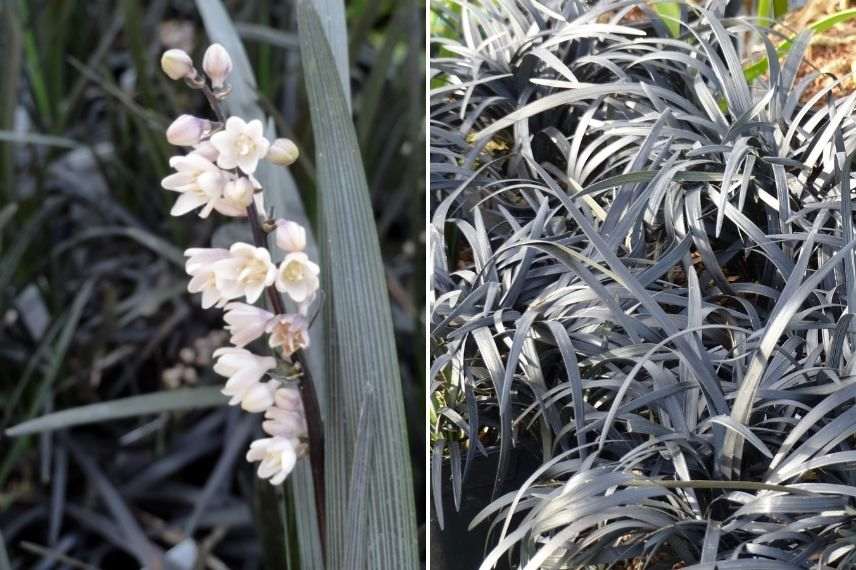
Ophiopogon planiscapus ‘Nigrescens’
Different species and varieties of Ophiogons are available online on our site.
Planting, growing, and caring for Ophiogons: all our tips in our dedicated guide.
Discover other Container perennials
View all →Available in 0 sizes
Available in 1 sizes
Available in 1 sizes
Available in 1 sizes
Available in 1 sizes
Available in 1 sizes
Available in 2 sizes
Available in 1 sizes
Available in 1 sizes
Available in 1 sizes
Primula elatior ‘Mister Gold Laced’
In the extensive collection of Primroses, here is one we have selected for you: Primula elatior ‘Mister Gold Laced’! This very hardy plant can be grown as a perennial or biennial and surprises us with its striking flowering. From March to May, at the beginning of spring, its crinkled green foliage is topped with extraordinary single flowers with very unique petals. These are bright yellow at their base, transitioning to burgundy red, and finally edged with a very light pure yellow. This wood primrose or elevated primrose is best planted in partial shade, as full sun should be avoided. An east-facing exposure is therefore suitable. Fast-growing, it prefers soils rich in humus, cool, and especially well-drained. Indeed, Primroses do not tolerate excess moisture, which causes grey rot, a disease caused by the fungus Botrytis cinerea. Provide it with liquid fertiliser once or twice a week throughout the flowering period and remove faded flowers.
Small in size, the evergreen Primrose ‘Mister Gold Laced’ is perfect in a container on a balcony, paired with a Begonia, Tiarella ‘Tiger Stripe’, a Pansy, and Erythronium tuolumnense ‘Pagoda’.
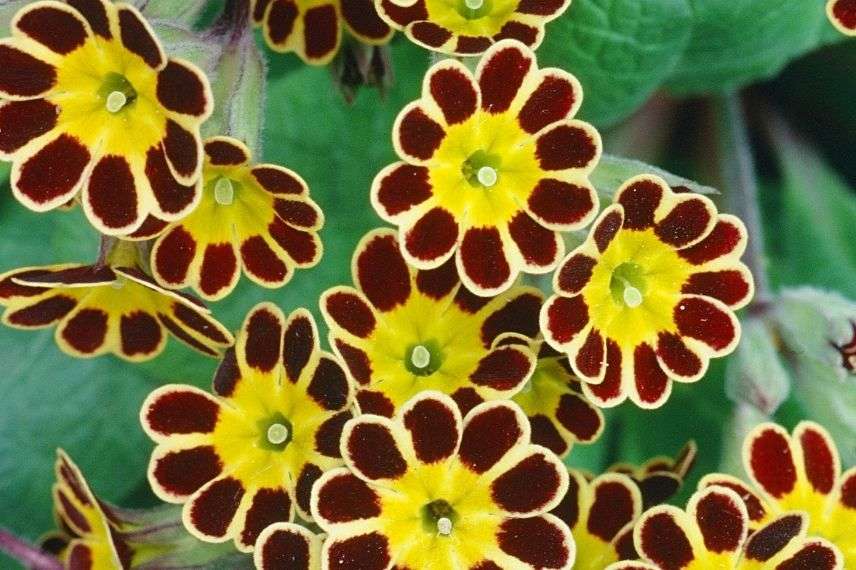
Primula elatior ‘Mister Gold Laced’
A wide selection of Primroses awaits you on our site.
Discover how to plant, prune, and care for Primroses.
Liriope muscari 'Gold Banded'
Robust and vigorous, the Liriope muscari ‘Gold Banded’ is also suitable for pot planting. Also known as Ophiopogon muscari, its dark green glossy foliage with yellow-edged borders adds to its charm. Forming a lovely clump, it looks stunning in a pot from which its linear leaves elegantly cascade. Its lavender flower spikes are longer than those of other Liriope muscari varieties. The flower stems rise above the foliage from July to October. After pollination, the bell-shaped flowers give way to berries. With excellent hardiness, this evergreen perennial has a slow growth rate. Easy to grow, this Liriope requires well-drained, humus-rich, neutral soil. Its foliage looks best in partial shade; gentle, indirect sunlight poses no problem. Low in water requirements, water it regularly during the first year. Afterwards, watering can be spaced out. At the beginning of spring, tidy the clump by removing any dried foliage and flower stems.
The Liriope ‘Gold Banded’ enhances balconies with its bright evergreen foliage and lavender-like flowering. Alone in a woven wicker pot, plant other perennials in pots to keep it company: Bergenia, Epimedium, Hepatica, and Pachysandra terminalis ‘Variegata’.
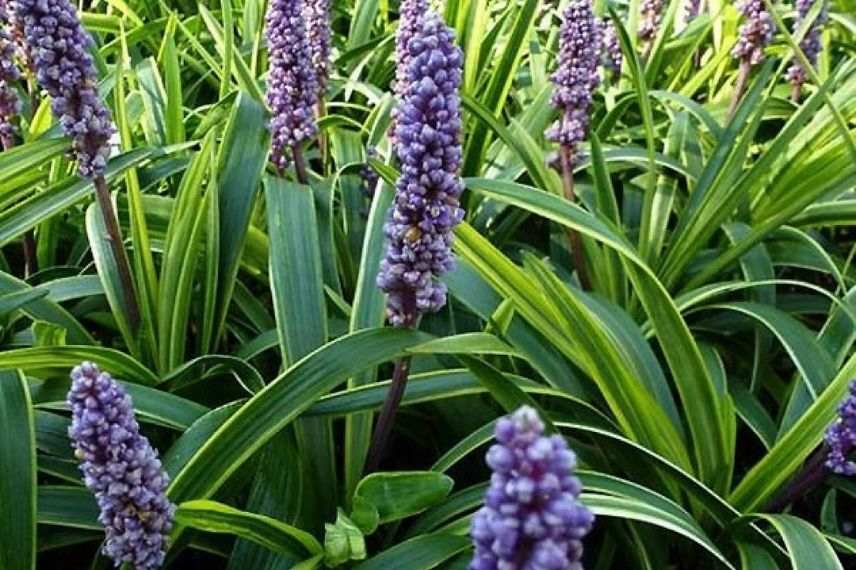
Ophiopogon muscari ‘Gold Banded’
All our species and varieties of Liriopes in our online nursery.
Our tips for planting, growing, and maintaining Liriopes.
Calluna vulgaris ‘Marlies’
This evergreen summer heather with a compact habit can also be grown in large pots. The Calluna vulgaris ‘Marlies’ decorates balconies from August to October with its abundant flowering of violet-pink bell-shaped flowers. Moreover, it delights insects with its nectar and pollen. In winter, the plant remains decorative thanks to its evergreen green foliage. Very hardy and robust, this perennial prefers partial shade or non-scorching sun. It enjoys light, humus-rich, rather acidic, and well-draining substrates, as stagnant moisture and heat can lead to fungal diseases. This water-efficient plant should still be well-watered during prolonged summer droughts. After flowering, prune it by reducing the young shoots to maintain a compact habit.
In a container, the summer heather ‘Marlies’ pairs well with Ivy, Aster sedifolius ‘Nanus’, Cyclamens, and Carex, or simply with winter heathers that take over with their winter flowering.
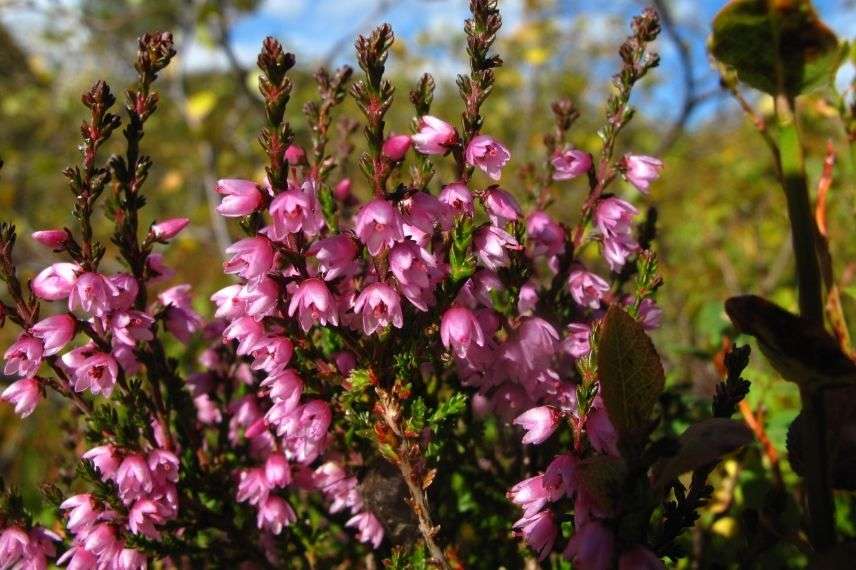
Calluna vulgaris ‘Marlies’ (photo Ole Husby)
We offer several other varieties of Callunas in our nursery.
Find the best practices for planting, growing, and maintaining Callunas in our guide.
Hakonechloa macra 'Nicolas'
To add colour to an east-facing balcony before winter, the Hakonechloa macra ‘Nicolas’ does the trick! This Japanese herb literally changes colour in late season: its ribbon-like leaves, green in summer, become variegated with orange, gold, and bronze in autumn! Its colours warm the atmosphere. This hardy and semi-evergreen grass grows slowly and eventually forms a clump about forty centimetres high. Place it in partial shade where its autumn foliage is even more beautiful and provide it with fresh, rich, well-drained soil. Cut it back at the end of winter and feed it in spring. During very dry summers, its pot should be watered regularly.
In solitude in a large container, Hakonechloa macra ‘Nicolas’ can be accompanied by other potted perennials such as Hostas, Heucheras, Aquilegia flabellata ‘Ministar’, and Digiplexis ‘Berry Canary’.
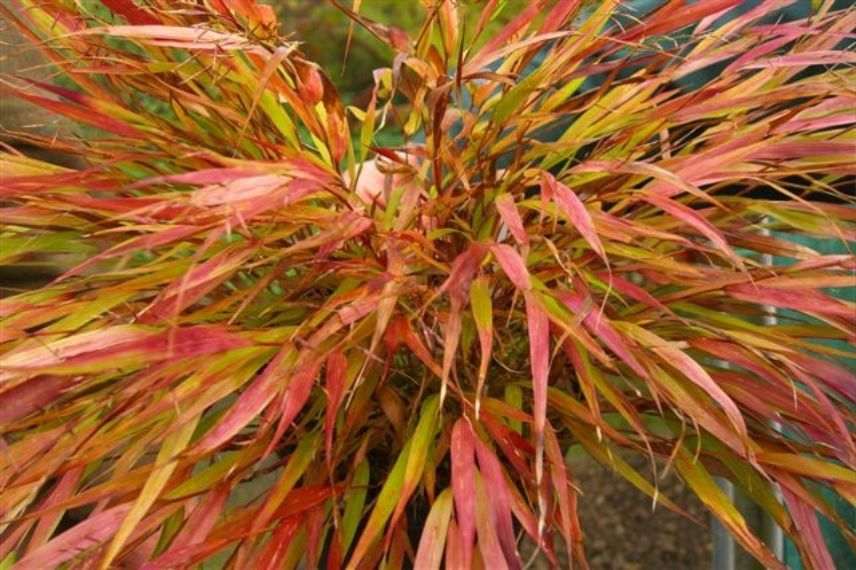
Hakonechloa macra ‘Nicolas’
Discover more varieties of Hakonechloas in our range.
Learn all about planting, growing, and caring for Hakonechloas!
Corydalis flexuosa ‘Porcelain Blue’
Corydalis flexuosa ‘Porcelain Blue’ forms a beautiful dense clump of dark green and bronze lobed leaves. This perennial delights us with a perpetual flowering from May to July and then from September to October. Its tubular flowers in stunning shades of blue attract pollinating insects with their light honey fragrance. Very hardy, it withstands temperatures below -15°C and is considered semi-evergreen: it loses its foliage in regions with cold winters. The Corydalis ‘Porcelain Blue’ thrives in shade or partial shade. Of medium growth, its small homogeneous habit makes it an ideal plant for pots. Plant it in a pot with a light, humus-bearing, and cool substrate, watering regularly in summer to keep the soil fresh. In spring, a simple tidy-up of the clump restores its good appearance.
The blue flowers of Corydalis flexuosa ‘Porcelain Blue’ will be enhanced when paired with Solomon’s Seal, Trycirtis hirta ‘Miyazaki’, Dicentra formosa ‘Spring Gold’, and Japanese Anemones.
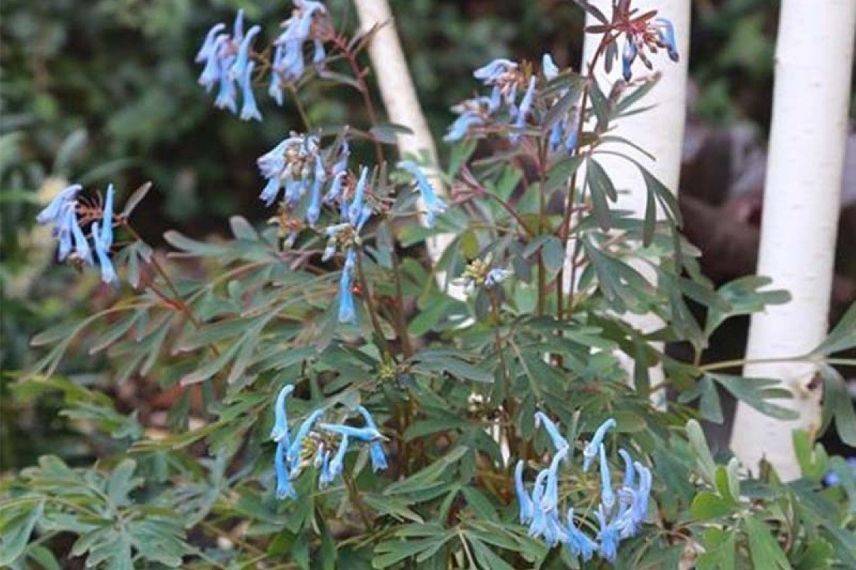
Corydalis flexuosa ‘Porcelain Blue’
Discover more varieties of Corydalis on our site.
Planting, growing, and maintaining Corydalis, we tell you everything!
- Subscribe!
- Contents
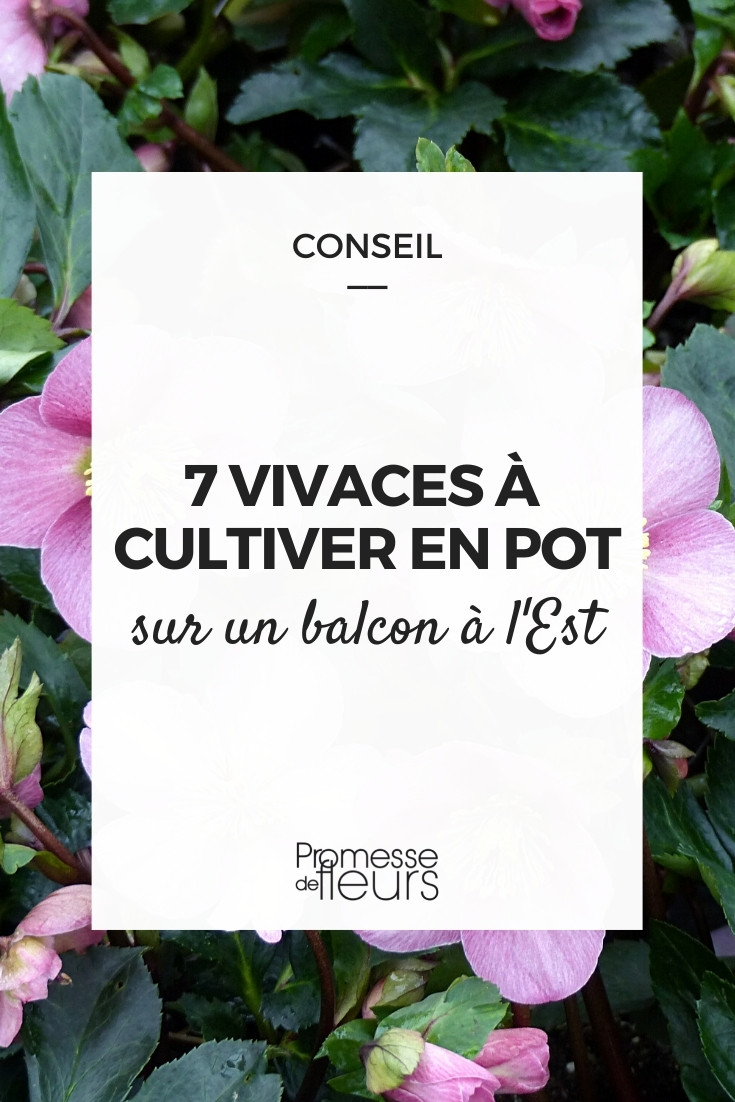































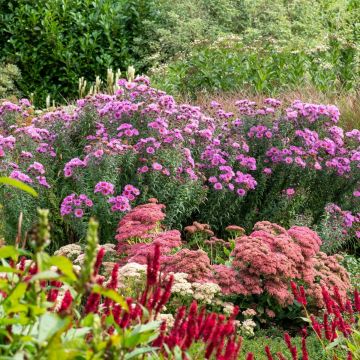

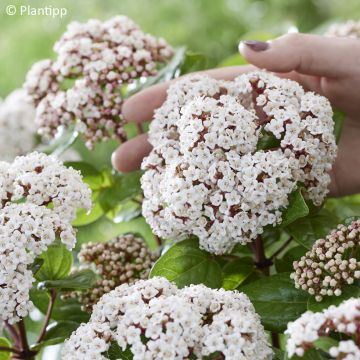
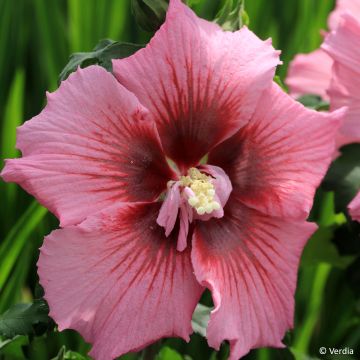
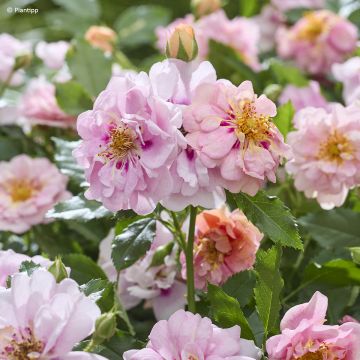
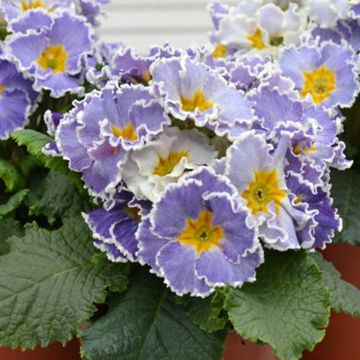
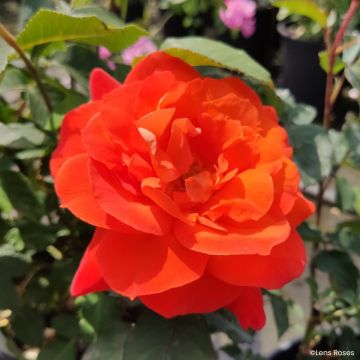
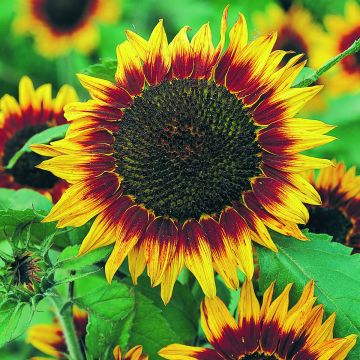
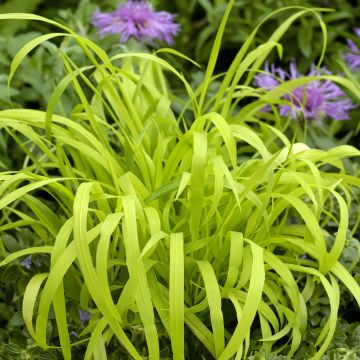
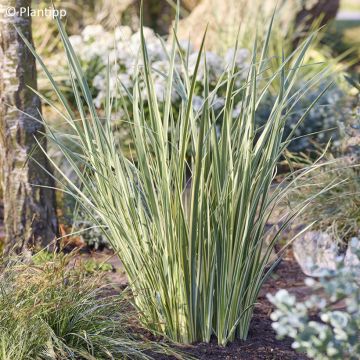
Comments